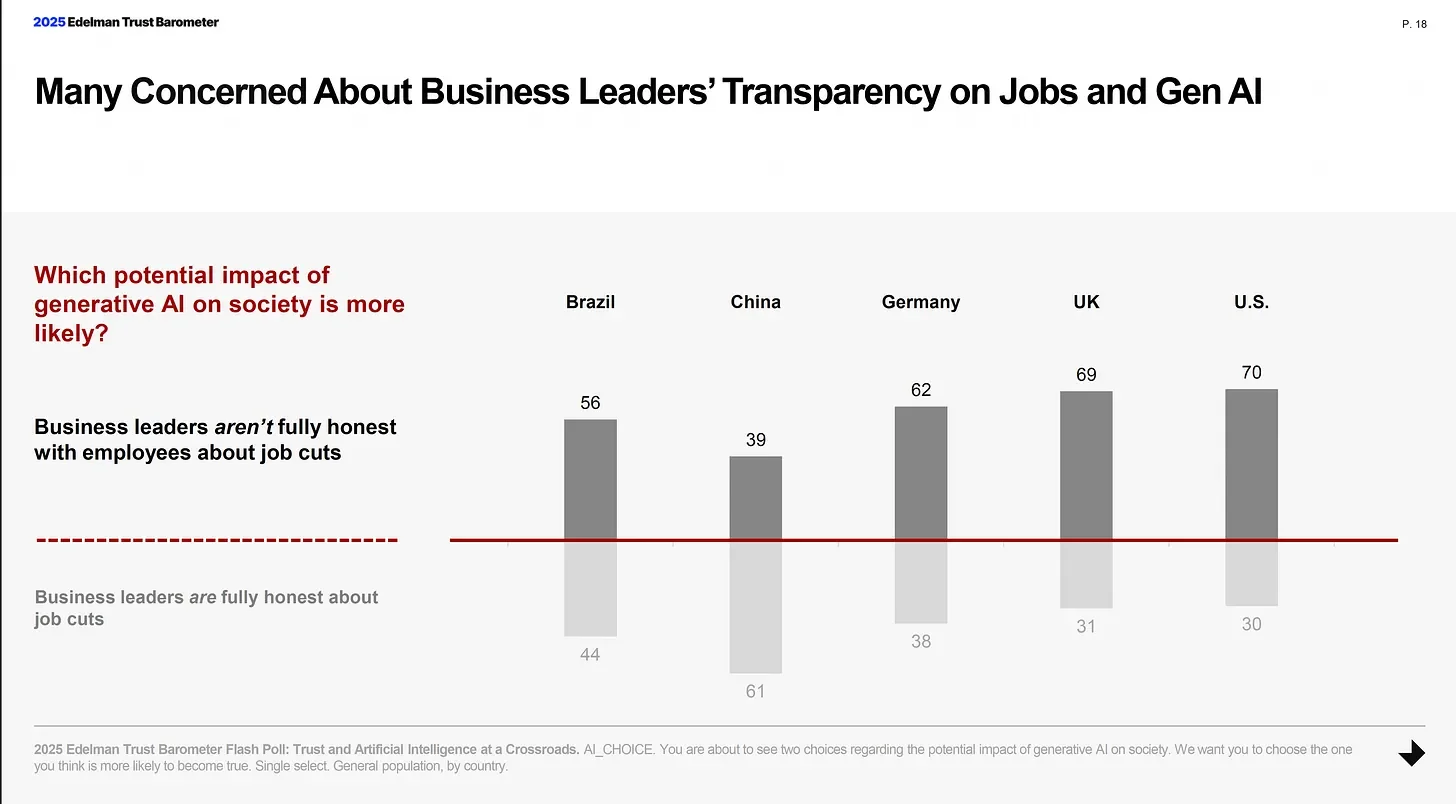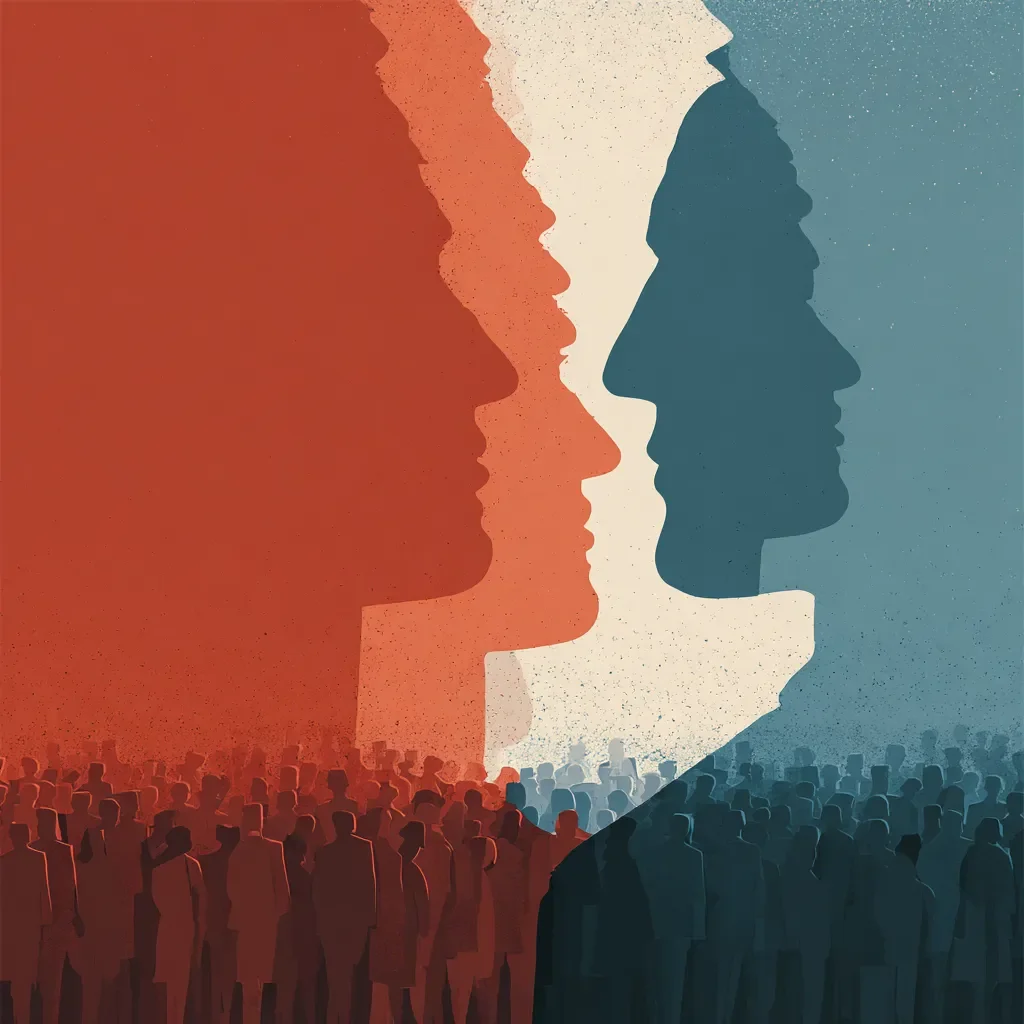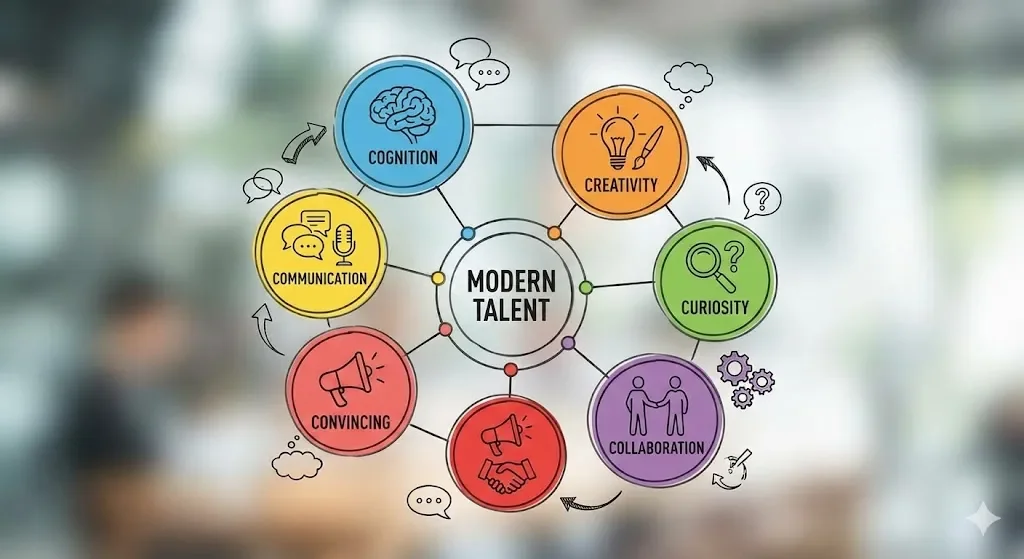Companies Do Not Transform. PeopleDo.
Visual via Midjourney
Organizations everywhere are struggling with change and seeking new ways to grow especially in these Tectonic Times .
Many specialists help them find a way forward.
A cavalcade of consultants, convey and communicate with countless charts, a curated combination of choices to the C-Suite.
A flurry of futurists frame, focus, and filter the way forward with the finesse of fortune tellers.
Masters of the Universe market M&A moves that might make multiples move upwards and manufacture many millions in market-cap.
PR professionals produce and promote points of view that position and polish to provoke the press to perceive with pristine perspectives.
While all of this may be important none of these will work without growing and changing the people in the organization.
While firms are a collection of ideas, technologies, patents, brands, ecosystems and people, it is people who are the the key. Because it is the people who create the ideas, technologies, patents, brands and eco-systems!
And in today’s AI age the technology itself is not a differentiator since everyone builds on the same half a dozen foundational models. It is the Humans who combines with the Alien Intelligence ( a better description of AI) that produce the distinctiveness and differentiation which drives value creation.
1. People and Organization the real challenge.
Michael Tyson said, “Everyone has a plan till they get punched in the face”.
Boards and leadership of firms come quickly to the realization that everything is easy until people get in the way.
Today, all over the world is there is deep concern among people in many organizations that AI is a threat to their livelihoods. Richard Edelman earlier this week at a dinner that Terence Kawaja invited us to after the announcement of the AI Lumascape (take a look it has created quite a stir) handed me the latest Edelman’s Trust Barometer flash poll which is worth reading. Here is the link to the report and one of the slides is reprinted above.
Whether it is Accenture, Bain, BCG, Deloitte or McKinsey, they all appear to be aligned that AI transformation will primarily be about people and organizations and not technology. Here is a great piece on Julie Sweet the CEO of Accenture on the need for reinvented leadership.
Telling people that change is good, threatening them with job loss if they do not change or creating communication materials and slogans to goad them into a cult like devotion to the new dear leader or the way forward rarely works in the short run and will likely fail after the threat of flagellation fades.
Too many companies are focussing on efficiency, effectiveness and enterprise technology versus talent.
Because, if there is nothing in it for them, people will out-wit, out-wait, out-pretend, and out-maneuver “management”. Until then they will fill the time genuflecting and bowing and going through the monitored motions of attending the right meetings, muttering the motivational mantras and stating the slogans required.
Today 67 percent of GenZ employees have a side gig with which they generate income, using the salary from their “main job” to create new options for themselves. After all , for 60 dollars a month anybody at any level, can have the latest Google, Open AI and Anthropic tools that run circles around what they are allowed to use at work. These tools provide all of us with cost effective and fast ways to launch AI first businesses with talent of any type (Agentic employees galore) and humans distributed anywhere in the world.
If we want our organization or our teams to grow and change we will need to deliver answers to four questions to our teams:
Why are the recommended changes good for them?
How can it help them grow ?
What are the monetary or other incentives to change?
When and where will training be provided to help them learn the new skills needed?
Change does not happen because of M&A, press Releases, re-organizations, or announcing an Open AI or some other AI partnership.
An organization changes and grows when the people in the organization change and grow.
Visual via Midjourney
2. There are two ways to change an organization: Get people to change or change the people.
What are the key ingredients that helped drive the successful transformation of companies including very large ones like Walmart and Microsoft?
Both firms had “lifers” take over as the CEO after years of each company roaming in the wilderness. They both succeeded in rejuvenating their firms by combining two different approaches:
A) Upgrading the mindset of a majority of the people at the firm.
This is best seen by the changes Satya Nadella has made at Microsoft which including moving from a “know it all mindset” to a “growth mindset”, a focus on enterprise and business professionals, a shift to openness and cloud and the elimination of the Windows Operating division. He also engineered a move away from a prickly approach of a “We vs the World” mindset to the embrace of the everything in the world including Linux with the purchase of GitHub to the Open AI investment and the hiring of Mustafa Suleyman from Google.
Through it all the focus has been on new behaviors and mindsets of people including top level and key talent.
B) A recruitment of key outsiders and high-level leaders and an investment in new people and skills.
This can be seen at Walmart. Doug McMillon who just announced his retirement, completely re-imagined the company through a combination of bringing in outsiders with acquisitions such as Jet, Flipkart, Vizio and most recently Dan Danker from Instacart to lead AI initiatives and launching highly profitable new lines of business such as Walmart Connect. But a major emphasis was als made in investing in current employees with better pay and job flexibility combined with a significant number of initiatives to up-skill employees including a one billion dollar investment in Walmart Academy.
Central to changes at both these companies ( whose market value have increased four fold (Walmart) and ten fold (Microsoft) in a decade under these leaders ) are that they combine revitalized/new leadership, a re-defined strategy and or organization with an emphasis on investing in growing and helping as many employees as possible transform themselves.
A new strategy, a new leader and a new organization are often necessary, but they are never sufficient to regain growth and manage change. To achieve this aim it is critical that the rank and file needs to be communicated with, incentivized and trained to change and grow.
Visual via Gemini Nano Banana Pro
3. The Six C’s Required of Modern Talent.
Today like never before we are living in a world of rapid transformation and change.
New industries rise and fall and the inter-connected unstoppable forces of globalization, demographic change and technology twist and toss all of us.
In this landscape how do we train talent or hone our own skills?
What will remain relevant and in demand in an age of shorter and shorter half-lives of firms and business models?
Six key skills will be essential in the future. Three of these have to do with the individual (Cognition, Creativity, Curiosity) and three on how we connect with each other and the world outside our minds including working with Agentic employees and AI Tools (Collaborate, Communicate, Convince).
Cognition is simply learning to think and keeping our mental operating system constantly upgraded. This requires deliberate practice and sustained work. Improved cognition is achievable.
Creativity is connecting dots in new ways, looking beyond the obvious and this skill will be key as AI powered computers, data crunch and co-relate faster than we ever will. To be human is to be creative. Creativity as vividly described by Sir John Hegarty is “an expression of oneself”.
Curiosity is simply being alive to possibilities, questioning the status quo and asking two questions. What If ? And Why Not ? Today the key competitor or opportunity in any category comes from outside it. Curiosity may have killed the cat, but the lack of curiosity may kill the the careers of many people.
Being cognitively gifted, creative and curious will not be enough since we are living in a connected world where eco-systems, teams and linkages are how ideas are born, value created, and long-term careers forged. It is a world where we will need to combine with five types of employees in a firm ( Full-time, Free-lance, Contract, Fractionalized and Agentic). To do so we will need to hone, build and train for three other skills:
Collaborate: Collaboration is key to work in a world where API’s (Application Protocol Interfaces) and MCP’s (Machine Context Protocols) are not just about handshakes or conversations between technology but also between individuals with different skills, teams in different countries, partners, suppliers and much more.
Communicate: Learn to write. Learn to speak. Learn to present. It may be so old school but watch the people who succeed, and they are good at communication. And all of these can be taught and learned.
Convince: Every one of us is a salesperson regardless of what we believe our title is. This is true even if we do not sell anything at work. We have to convince colleagues of our points of view. We have to convince our partners to join us on our life journey. Learn to convince and learn to sell. Story telling is a key.
Visual via Grok by xAI
4. The Four Keys to Evaluating Experienced Hires Before Letting Them In.
It is rare that a company can avoid hiring significant talent from outside if it is serious about transforming itself to change and grow. New skills, new mindsets and new blood enhances the corporate genetic pool.
But these hires are particularly fraught, and experience indicates that focusing on four key criteria can minimize the risk.
These are a) Mental Agility, b) Integrity, c) Impact and d) Fit/Chemistry.
Two of these filters Mental Agility and Fit/Chemistry require multiple interviews and two of them —Impact and Integrity —require deep investigation (background checks, references).
Mental agility is key to lead a team or a company in a world of change and only in an interview can one test for this. Similarly, chemistry matters. Too many companies bring in a wunderkind who either fails to adapt or is chewed up and spit out by the organization. While “Culture” may eat strategy for breakfast it hones its chewing skills by gnawing on the bones of outside talent.
Integrity and Impact needs to be evaluated over time and requires in depth research.
Integrity has never been more important and in today’s world trust is increasingly key.
Impact on Business can be measured through financial results but as important is how the individual has built teams, grown people and dealt with long term periods of stress or setback.
Ex-bosses and ex-direct reports are usually the ideal people to interrogate since they can provide perspective, put things into context and provide a multi-faceted picture of the person and are far less constrained than current colleagues or suppliers.
AI-Volution of Culture on December 3 at the New York Times Center.
Interested in gaining some insights, ideas and much more about how culture and people are transforming? I have comp tickets. As some of you know, I sit on the board of Quilt.AI. Many years ago, one of the co-founders fed me a $4 breakfast at a hawker center in Singapore and now they have graduated to hosting AI & Culture events in New York City. Amazing speakers in a short 4 hour action packed afternoon including Nick Thompson, editor of the Atlantic, Georgina Scholtens, CMO of Versace, and Dr. Patrick Leddin, best selling author. If you are NYC based, please join as my guest by registering for free on this link: Rishad’s Guest Link.





